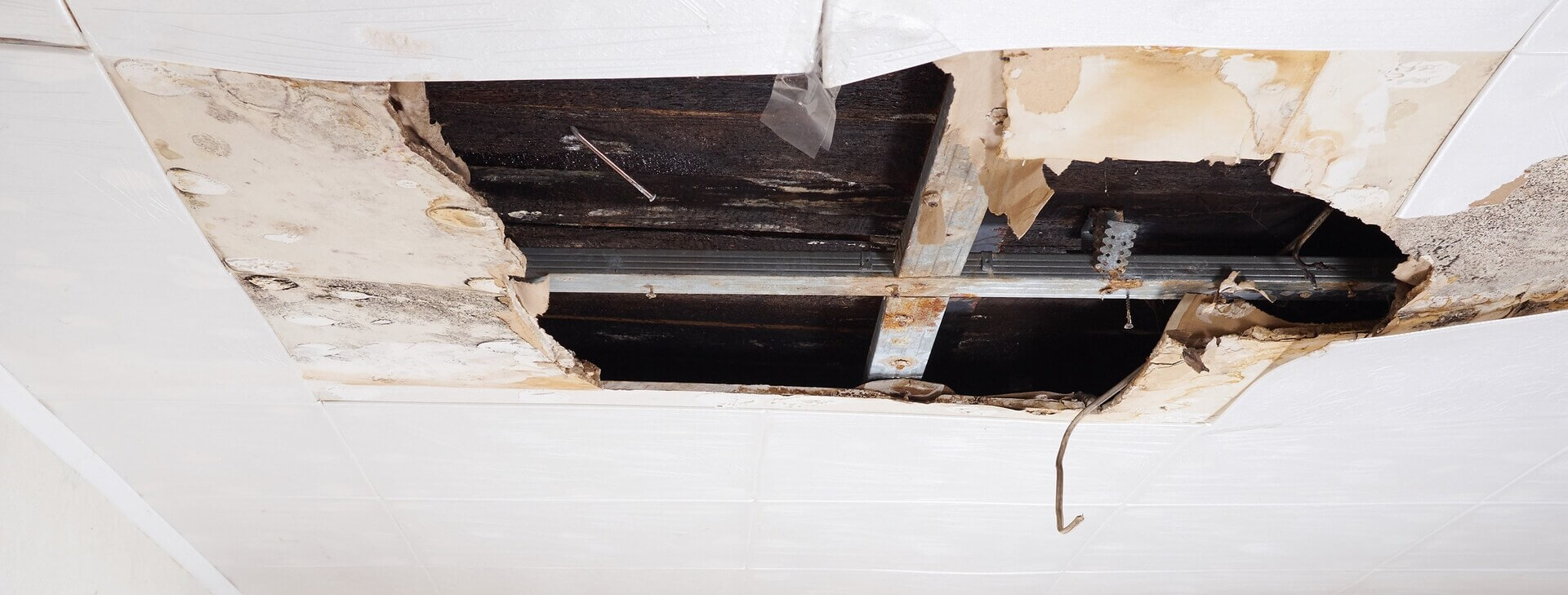The good, the bad, and the ugly about rental housing inspections

Keeping a rental unit in habitable condition is a three-fold responsibility between landlords, tenants, and municipalities policing the relationship, but these lines are often blurred.
![]()
After beating back recall efforts, an invigorated Governor Newsom signed more than two dozen housing bills, mostly aimed at spurring new development, but AB 838 addresses renter complaints of substandard housing.
An amendment to the Health and Safety Code, section 17970.5, will require municipalities to send out an inspector once a complaint has been made. The city or county would then have to notify the landlord of any violations and lay out the steps necessary to bring the property up to compliance.
Not taking the landlord at their word that the problems are corrected, the rental unit will be reinspected to make sure that it now is in habitable condition.
Many local governments already have their own inspection programs, but AB 838 gives a greater nudge for them to respond to complaints so as to nip problems in the bud and not let a property deteriorate further.
By imposing new duties on local government officials, the bill would impose a state-mandated local program. The cerebral types can read the law in its entirety here.

Findings from the inspector
If an inspector is dispatched, the new law would require that a report be furnished to both the tenant and owner of the inspector's assessment, at no charge.
While agreeing with the intent of the bill, the Rural County Representatives of California, the Urban Counties of California, and the League of California cities voiced concerns about necessary but non-reimbursable costs local governments incur for sending out inspectors for every complaint regardless of the merits.
In cities that have pre-existing inspection programs, landlords do not have to foot the bill for an inspector to come out. Landlords’ fees add up when there are multiple visits to the property and when inspectors have to sign off on uncompleted or shoddy work.
State lawmakers seemingly had serial complainers in mind by telling local governments that an inspection is not mandatory when any prior complaint was determined to be frivolous within the past 180 days.
The debate over proactive versus reactive inspections
The Oakland Ghost Ship fire in 2016 sparked a debate on whether inspections should be proactive by seeking out code violations on their own through periodic inspections or whether cities should merely respond to complaints.
Read our earlier blog: Proactive rental inspection programs aim to nip problems in the bud →
Inspections are a double-edged sword. They can be used for and against landlords.
In the event that a matter escalates in court or the rent board, the results of inspection findings can carry a lot of weight. Has the inspector found substandard conditions? If so, the landlord is in a pickle if they decide to pursue an unlawful detainer action.
For example, a tenant or their attorney can argue that the tenant was justified in not paying rent because the dwelling was inhabitable. We know that there are many landlords who have let the property atrophy because a tenant was not paying rent during the pandemic. In other situations, there is simply no money to effectuate repairs - the landlord is going broke because the tenant is not paying rent. Other times, it is vindictive. If there is no rental income, the owner reasons that it is okay to deny certain minimal standards of care.
Worst of all, some landlords will engage in overt actions to run out the tenant through illegal lockouts, utility shutoffs, and other harassment measures that will not only tank an eviction later on but invite a six-figure lawsuit.
Although a hard pill to swallow, we remind owners that while the rental unit may be their property, it is the renter's home and that California’s implied warranty of habitability applies to all residential dwellings, irrespective of whether rent is paid. Critical maintenance issues must be addressed, even if rent has not been paid; so long as the tenant is legally occupying the premises, there is a sacrosanct duty to maintain minimal standards to keep the unit fit for human occupancy.
Rest assured, if an inspection uncovers inadequate living conditions, it will compromise the landlord’s ability to recover possession of the unit, especially when the would-be-evictee comes equipped with a savvy tenants’ attorney.
Of course, the property/rental unit can be given a clean bill of health and the landlord can use this validation to defend a claim that rent should be withheld or that an eviction should be delayed.

It’s a two-pronged question we are faced with: Has the tenant fulfilled his or her part by paying rent? If not, we move to the next riddle: Has the landlord fulfilled their obligation by providing safe, sanitary, and secure housing? If the answer is yes, the landlord is likely to accomplish the goal of a vacancy.
![]()
While calling code enforcement or otherwise squawking about living conditions is normally associated with tenants who have gripes, or clever smoke and mirrors made by tenants’ attorneys to delay an inevitable eviction, landlords could in fact go on the offensive and lodge complaints of their own.

If an inspection reveals defects in the property that can be used by tenants, it stands to reason that the landlord can use a passing grade to debunk any claims of inhabitability.
When the landlord passes an inspection, this vote of confidence can be used as ammunition in defending against a tenant’s claim, but taken a step further, the landlord can initiate their own report that the tenant is the culprit of substandard conditions.
For example, the tenant exhibits hoarding behavior. There are egress issues. There is garbage stacked up that smells foul and is attracting rodents. The state of the rental unit is so bad that it spills over to neighboring units, but it’s because of the tenant’s neglect. The disarray falls squarely on the responsibility of the renter.
We’ve heard a lot about “no-fault” evictions when a tenant is transitioned out of the unit through no fault of their own, but what about unlivable conditions that have been created through no fault of the landlord?
In those instances when the premises are in a state of squalor because the resident let it deteriorate, landlords can report it. This seems counterintuitive. Essentially, the landlords “snitch” on themselves by admitting the premises are not in a livable condition but assign the blame to the tenant.
If the inspector agrees that the dwelling falls short of minimal livability standards, it will be up to the landlord to correct violations; it will not be up to the tenant to clean up their act, but any violations fall into the laps of their landlord.
Yet armed with an inspector’s trusted assessment that points to neglect by the tenant, the landlord can easily prevail in court when it comes time to evict the tenant. In other words, the landlord has a cover. An inspection that exonerates the rental property owner can ensure that any baseless assertion that lazy or uncaring landlords can be later shot down as meritless.

“It goes both ways,” says Debra Carlton of the California Apartment Association. The Executive Vice President of Government Affairs says that while many local governments have inspection programs that require cities and counties to take action, some localities have put restrictions on whether or not inspectors would respond to a complaint.
AB 838 empowers landlords to document hoarding, fire hazards, and other substandard conditions while exposing any frivolous claims that the landlord is not fixing hazards in the rental unit, Carlton says. In acrimonious landlord-tenant disputes, it will ultimately be up to a judge or a jury to decide who is responsible for disrepair and squalor, but an inspector could put baseless claims to rest.
After engaging in a fluid discussion with the bill’s author, CAA eventually took a neutral position on the newly minted legislation.
An inspection assumes that there is access granted to the premises that will be inspected. Gaining access can come with challenges of its own.
Our hard-won experience has shown that some tenants do not want anyone to snoop around and will go through elaborate means to disguise something in their rental unit. That something is left only to the imagination. Even if there is a bed bug infestation, tenants with something to hide have been known to deny access to an exterminator.
Although landlords need to be the eyes and ears of their property, they can only enter with proper notice. Does anyone remember the endearing Three’s Company sitcom when Ralph Furley or Stanley Roper showed up unannounced and caught Jack and his roommates in embarrassing moments? Times have changed, as we noted in an earlier Medium blog. Barring an emergency situation like flooding, fire, and the like. landlords need a permissible reason to enter and then only with proper notice. Rental property owners should familiarize themselves with these reasons, but this goes beyond the scope of this article.
Suffice it to say, though, that if a tenant chronically obstructs access to the rental unit, it could be a “just cause” for eviction. During the pandemic, landlords and property managers oftentimes found themselves in a pickle. On the one hand, they needed access to effectuate necessary repairs or perform preventative maintenance, but renters expressed a legitimate fear of contagion with contractors going in and out of the unit. With California’s reopening, these objections should not be so persuasive.
One tool landlords can use to get an inside glimpse of the property is to inspect smoke alarms and carbon monoxide detectors, but this reason to enter should be used sparingly.
Tread lightly when it comes to reporting tenants to local officials
When there are substandard conditions, it is quite possible that there is a hoarding condition that has an underlying mental health issue. If so, the tenant may fall into a “protected” class because they are considered in the eyes of the law to be disabled and afforded more latitude to correct the violation.
Rectifying violations can ordinarily involve multiple governmental agencies, but when the tenant is elderly or asserts a disability, this can require intervention from Adult Protective Services, mental health professionals, and others. It may “take a village” to solve the problem, so some outreach and patience is in order. We know that the recidivism rate for hoarding behavior is high, but after the landlord demonstrates they made every effort to offer compassionate solutions and elicit help and the behavior continues, we can file an unlawful detainer action.
IN-DEPTH: Read our substantial piece on handling tenant hoarding →
Parting thoughts
Keeping a rental unit in habitable condition is a dual responsibility.
It's well established that the dwelling need not be in pristine condition, but minimal standards like safe heating, effective waterproofing, plumbing and gas facilities, well-maintained stairs, and common areas, along with a host of other responsibilities fall squarely on the side of the landlord. Yet the tenant needs to do their part in keeping the rental unit in a livable state.
What we have in law are competing narratives. In litigation, there can be finger-pointing as to who is the culprit of substandard conditions. Having represented landlords in all manner of thorny disputes for over 26 years, Bornstein Law is best able to build this narrative.
